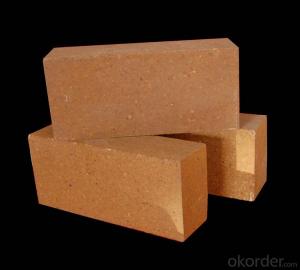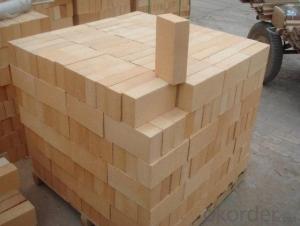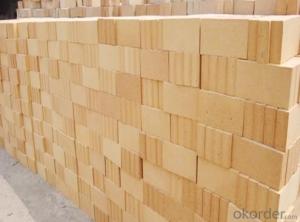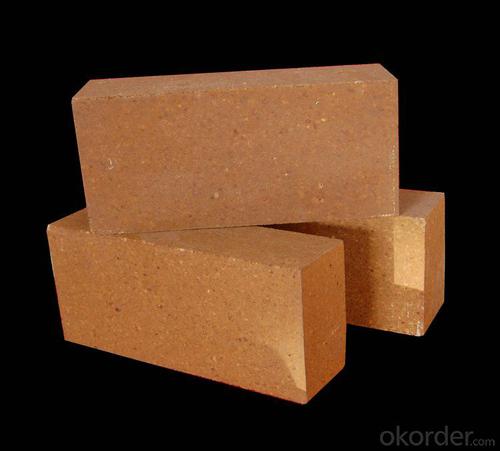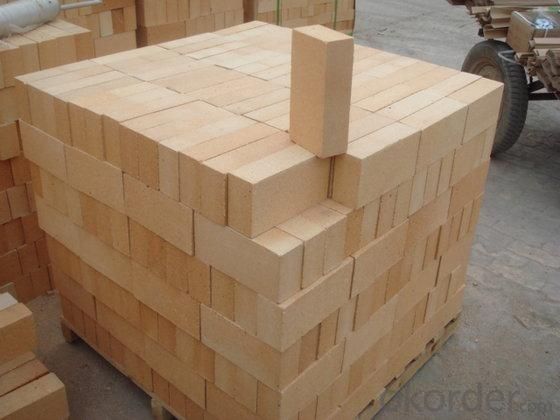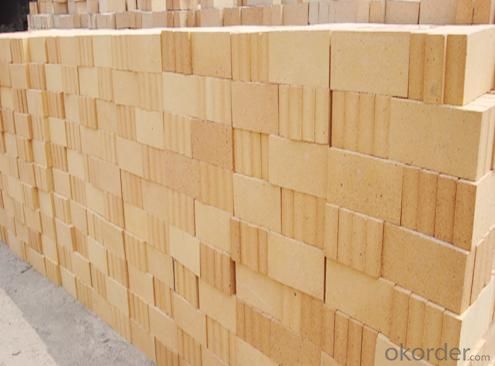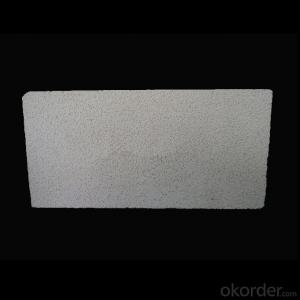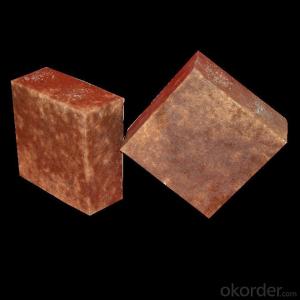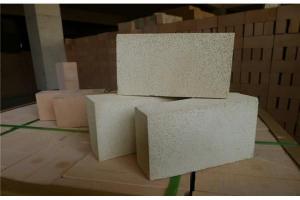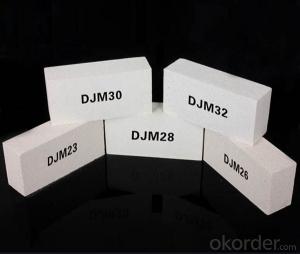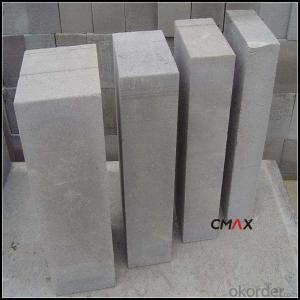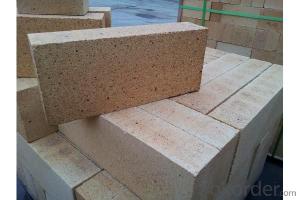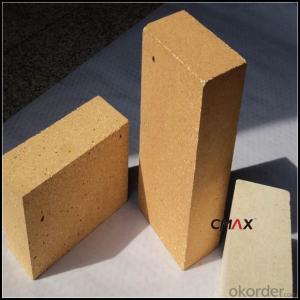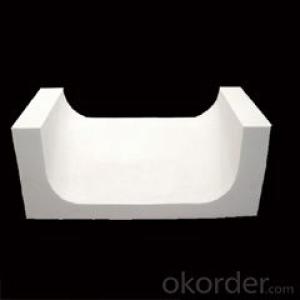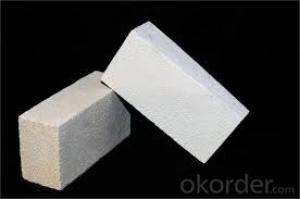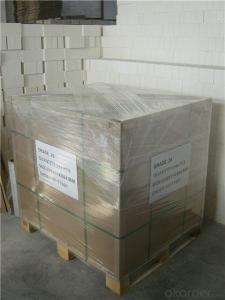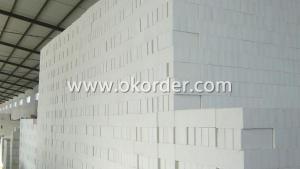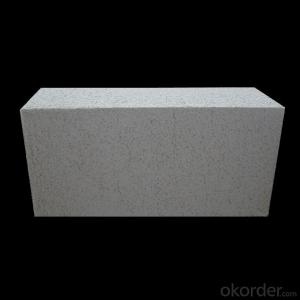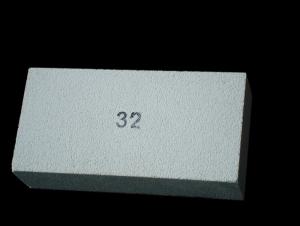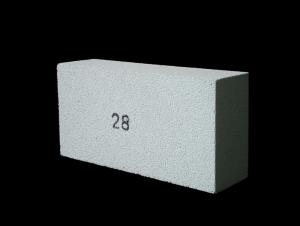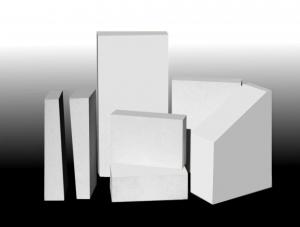Insulating Fire Brick - Quality Refractory Insulation Fire Brick
- Loading Port:
- China main port
- Payment Terms:
- TT OR LC
- Min Order Qty:
- 30 m.t.
- Supply Capability:
- 10000 m.t./month
OKorder Service Pledge
OKorder Financial Service
You Might Also Like
CNBM Alumina Fire Brick are classified according to alumina content ranging from 48% to 90%.
CNBM Alumina Fire Brick are commonly used in blast furnace, hot blast furnace, the roof of electric furnace, teeming ladle, rotary kiln, regenerator, etc.
Insulating Fire Brick Technical index
Product No. | IFB70 | IFB60 | IFB50 | IFB40 |
Al2O3 | 68%-72% | 58%-62% | 48%-52% | 38%-40% |
Refractoriness (°C ) | ≥1790 | ≥1790 | ≥1790 | ≥1790 |
Bulk density (g/cm3) | 2.50-2.60 | 2.35-2.45 | 2.20-2.30 | 2.10-2.20 |
Apparent porosity (%) | 22 | 19-22 | 17-20 | 17-20 |
Cold Crushing strength (kg) | 480-510 | 450-480 | 430-450 | 390-430 |
Application
Insulating Fire Brick are used for the lining of converter, alternating current arc furnace, direct Current arc furnace and the ladle slag line, etc.
Equipment
1 unit of Ceramic Abrasive (SG Abrasive) pilot production line
2 units of Compact grain Abrasive pilot production lines
1 unit of high-end coated abrasives (abrasive cloth) production line
Company Advantage
(1)Long Insulating Fire Brick manufacture history: 25 years manufacturer
(2)Advanced equipment
(3)Diversification of production standards: ISO ANSI FEPA JIS ASTM
(4)Flexible payment: T/T L/C D/P D/A
(5)Professional marketing team and after-sale service
(6)Free sample
FAQs
Q1 |
What’s the transport method? |
A1 | FCL delivery goods with wooden pallet or wooden case by sea; If LCL delivery, must with wooden case; Sometimes need open top, flat rack or bulk cargo. |
Q2 |
What’s the required payment term? |
A2 | Generally 30% TT as the prepayment, 70% TT before delivery. If need, 100% Irrevocable Letter of Credit or negotiation. |
Q3 |
Which country are our products exported to? |
A3 | Apart from entire Chinese market, the US, Russia, Japan, Korea, Australia and some Southeast Asian Nations. |
- Q: Can insulating fire bricks be used in chimney lining?
- Indeed, insulating fire bricks are a suitable option for chimney lining. These bricks are specifically engineered to endure extreme heat and offer exceptional insulation. Their ability to retain heat within the chimney prevents any loss through the walls, which ultimately enhances the efficiency of fireplaces or stoves. Moreover, their lightweight nature and straightforward installation process have contributed to their popularity in chimney lining projects. Nonetheless, it is crucial to verify that the chosen insulating fire brick meets the requirements for chimney applications and adheres to local building codes and regulations.
- Q: Do insulating fire bricks require a curing period before use?
- No, insulating fire bricks do not typically require a curing period before use. They can be used immediately after installation without the need for any additional curing time.
- Q: Can insulating fire bricks be used for insulation in smelters?
- Yes, insulating fire bricks can be used for insulation in smelters. Insulating fire bricks are designed to withstand high temperatures and provide excellent insulation properties, making them suitable for use in smelting operations where heat containment is crucial to optimize energy efficiency and protect the surrounding environment.
- Q: Can insulating fire bricks be used in oil refineries?
- Yes, insulating fire bricks can be used in oil refineries. These bricks are designed to withstand high temperatures and provide excellent insulation, making them suitable for various industrial applications, including oil refineries. They help to reduce heat loss, improve energy efficiency, and protect the surrounding equipment and structures from extreme heat.
- Q: Can insulating fire bricks be used in the construction of lime kilns?
- Yes, insulating fire bricks can be used in the construction of lime kilns. Insulating fire bricks are designed to have low thermal conductivity, which means they have excellent insulation properties. This makes them suitable for use in lime kilns, where high temperatures are required for the calcination process. Lime kilns operate at temperatures ranging from 900 to 1200 degrees Celsius, and the intense heat generated during this process must be contained within the kiln to ensure efficient and effective lime production. Insulating fire bricks help to achieve this by reducing heat loss through the kiln walls, allowing for higher energy efficiency and lower operating costs. Additionally, insulating fire bricks are lightweight and easy to handle, making them convenient for construction purposes. They can be easily shaped and cut to fit the specific requirements of the lime kiln design, ensuring a tight and secure fit. Furthermore, insulating fire bricks have good resistance to thermal shock, which is crucial in lime kilns where rapid temperature changes occur during the firing process. This resistance helps to prevent cracking and structural damage, ensuring the longevity and durability of the kiln. In summary, insulating fire bricks are a suitable choice for the construction of lime kilns due to their low thermal conductivity, lightweight nature, ease of shaping, and resistance to thermal shock.
- Q: What is the refractoriness of insulating fire bricks?
- The refractoriness of insulating fire bricks refers to their ability to withstand high temperatures without losing their structural integrity or insulation properties.
- Q: How do insulating fire bricks contribute to energy efficiency?
- Insulating fire bricks contribute to energy efficiency by providing excellent thermal insulation properties, which help to minimize heat loss and retain heat within a structure. This insulation reduces the need for excessive heating or cooling, resulting in lower energy consumption and cost savings.
- Q: Can insulating fire bricks be used in drying ovens?
- Yes, insulating fire bricks can be used in drying ovens. Insulating fire bricks are designed to have low thermal conductivity, which makes them an excellent choice for applications that require heat insulation, such as drying ovens. These bricks can withstand high temperatures and provide insulation to help maintain the desired temperature inside the oven, while also reducing heat loss to the surroundings. Additionally, insulating fire bricks are lightweight and easy to install, making them a practical choice for use in drying ovens.
- Q: Are insulating fire bricks suitable for insulation in cryogenic applications?
- Yes, insulating fire bricks are suitable for insulation in cryogenic applications. Insulating fire bricks have excellent thermal insulation properties, low thermal conductivity, and can withstand extremely low temperatures. This makes them ideal for use in cryogenic applications where insulation is required to maintain the low temperature of the system.
- Q: Do insulating fire bricks require any special installation techniques?
- Yes, insulating fire bricks require special installation techniques. These bricks are typically lightweight and have low thermal conductivity, making them highly effective in insulating applications. To ensure proper installation, it is important to follow the manufacturer's guidelines and use appropriate tools, such as refractory mortar or adhesive, to securely bond the bricks together. Additionally, proper curing and drying procedures should be followed to avoid any potential cracking or damage during the installation process.
Send your message to us
Insulating Fire Brick - Quality Refractory Insulation Fire Brick
- Loading Port:
- China main port
- Payment Terms:
- TT OR LC
- Min Order Qty:
- 30 m.t.
- Supply Capability:
- 10000 m.t./month
OKorder Service Pledge
OKorder Financial Service
Similar products
Hot products
Hot Searches
Related keywords
